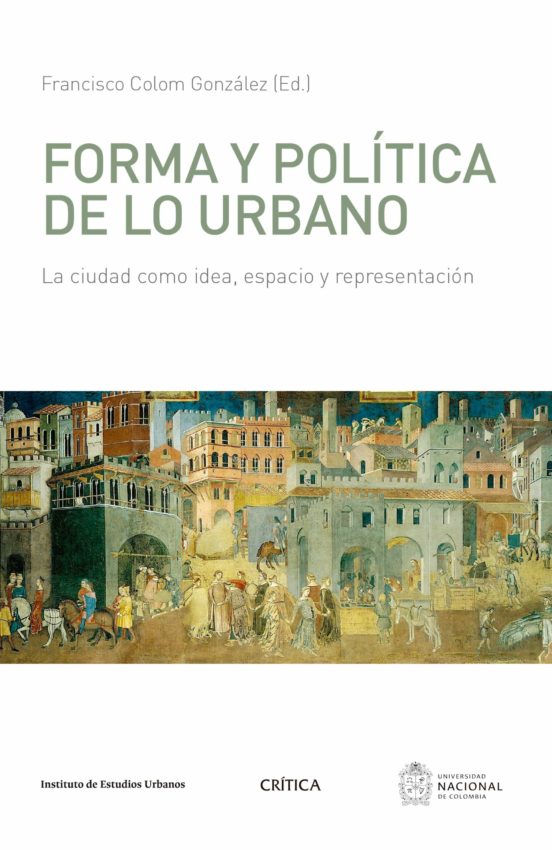
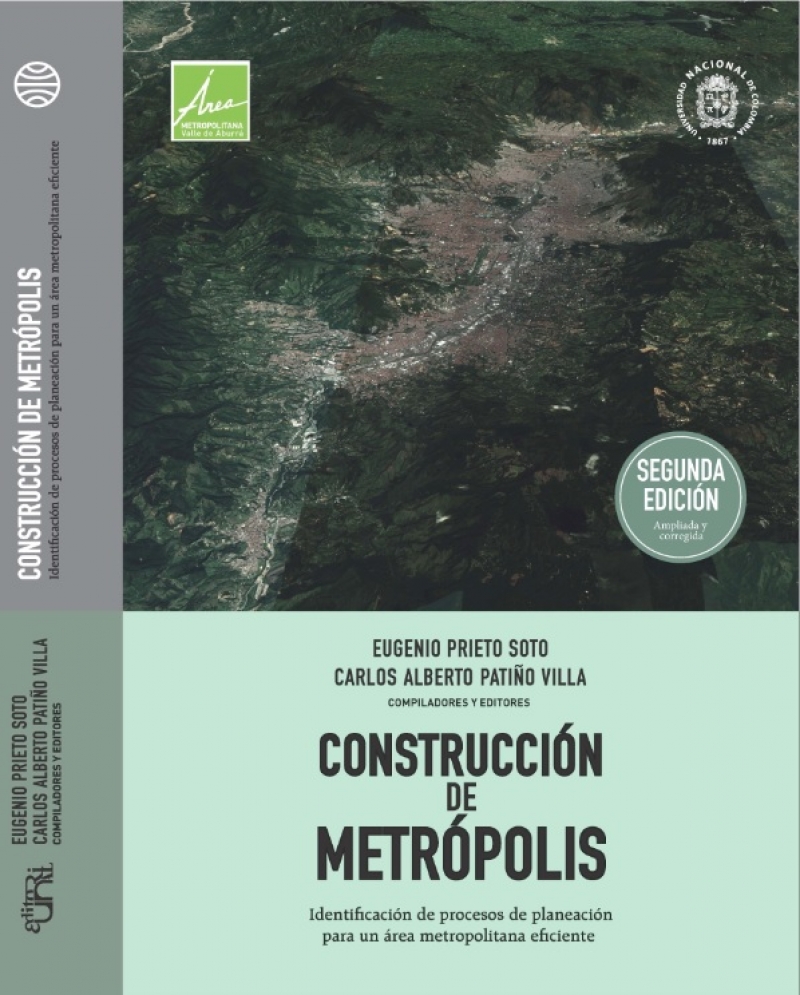
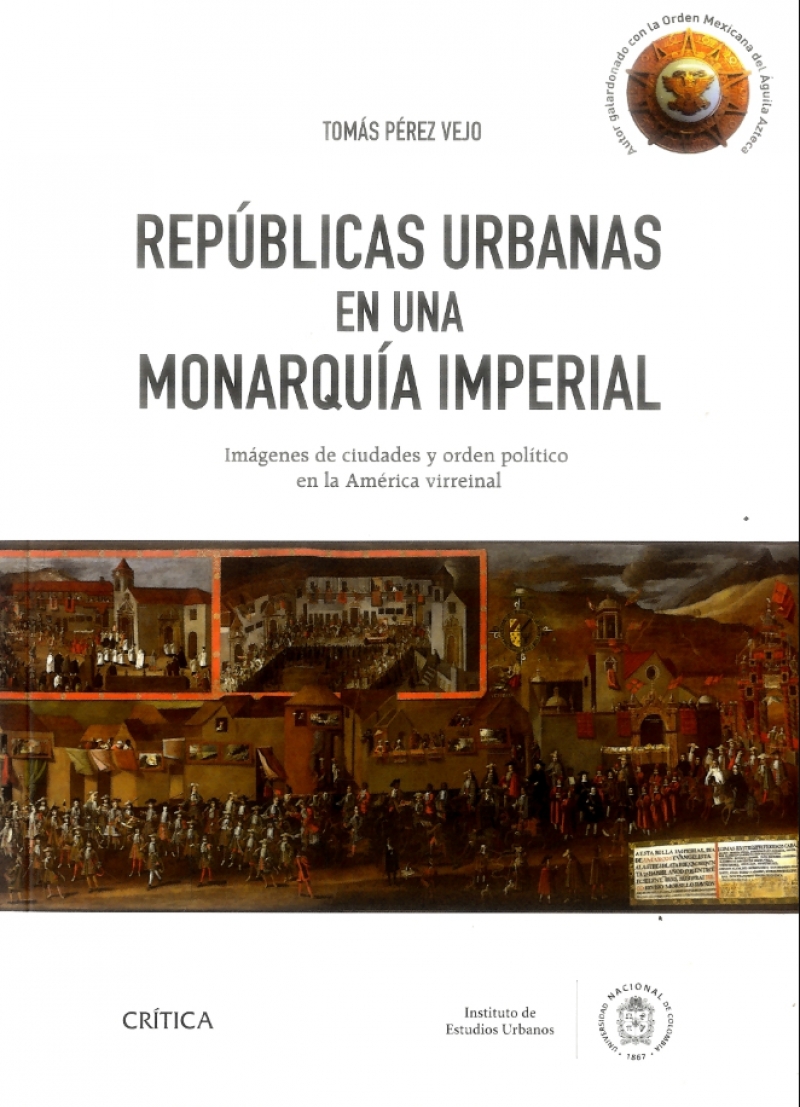
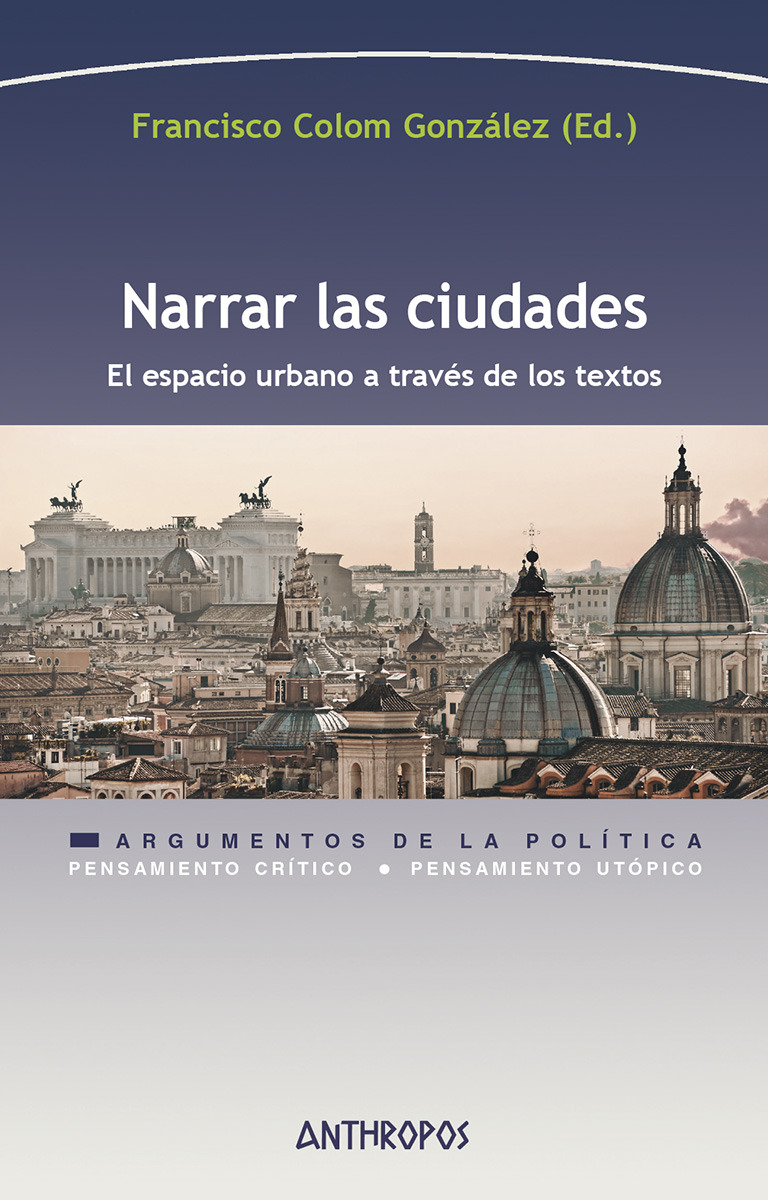
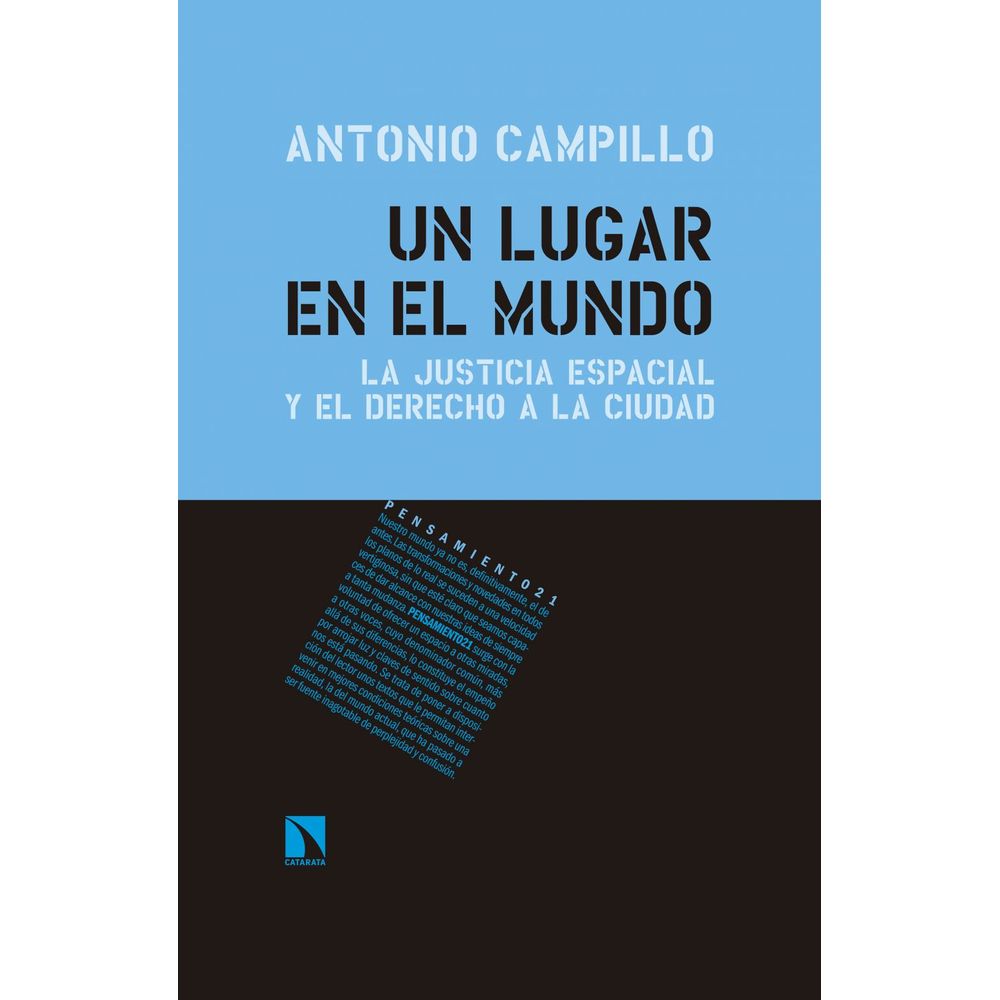
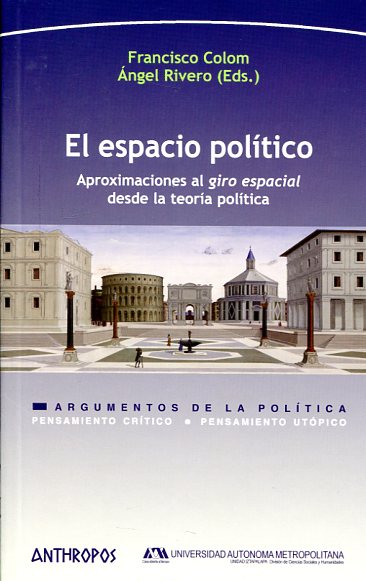
Francisco Colom González (ed.): Narrar las ciudades. El espacio urbano a través de los textos. Barcelona, Anthropos, 2020. ISBN: 978-84-17556-35-8
Cities are not a timeless structures made out of buildings, spaces and symbols. They are artifacts created and inhabited by human beings. The meanings of the city are submitted to continuos change that depends on the interaction of the individuals with the built environment. This urban body, however, does not speak by itself. Its meanings, and therefore the possibility of reading the city, refer us to its past, culture and social tissue, to the streets and the stories that narrate how the city was seen and lived by its inhabitants. A city appears from this perspective as a space that is both narratively and normatively mediated, as a depository of the personal and collective memory of its dwellers that is transmitted to us through its buildings, monuments and visual legacy. This books explores a series of European, African and Latin American cities through the eyes of some exceptional witnesses; writers, philosophers and artists for whom such cities played a fundamental role in their lives and works. Their experience of the city thus helps us to frame their creations and to better understand the urban environment in which they were conceived.
Fr. Alonso Castrillo: Tratado de República con otras historias y antigüedades. Edición de Ángel Rivero. Madrid, Centro de Estudios Políticos y Constitucionales, 2020. ISBN: 978-84-25918-65-0
The Treatise on the Republic with other histories and antiquities is a work dedicated to good government in which the value of politics as an instrument for the coordination of human life is exalted. The book was composed in 1520 and published in 1521, that is to say, its writing takes place in the middle of the high point of the conflict of the Communities, after the departure of Charles to Germany; and it is published when Burgos has already returned to the obedience to the king and just two days before the decisive battle of Villalar. Built on the Ciceronian and Aristotelian model, the work begins by defining the city and its components in order to embark on the best definition of its government, that is, of what makes the city a republic. To do so, he resorts to the classical place of pondering the natural character of the monarchy by reference to the bees, while at the same time presenting them as models of civic virtues. Chief among these virtues is the obedience they have to their king. After this classical beginning, which goes from chapter 1 to 8, Castrillo takes the more pessimistic path of the Christian vision of the city of men. From chapter 9 to 17 he explains to us that men created cities in offense of God and that, therefore, the nature of men being social, their political life on earth is necessarily doomed to conflict. However, Castrillo does not allow himself to be carried away by pessimism and does not postpone the full life of men in society to the arrival of the city of God. In chapters 18, 19 and 20 he launches into comparative politics, explaining that there are well-governed political communities on earth, republics, as shown by the examples of Jews, Greeks and Romans. In chapters 21 to 29 Castrillo takes a practical orientation and points out a series of particular questions whose attention seems to him relevant to achieve good government: the fortune or misfortune of some monarchs; the need for political offices not to be for life; the excellence of political science as a precondition of human life; and, a crucial issue: who should be a governing citizen in a republic. Here Castrillo shows his belonging to the nobiliary party of which he becomes spokesman, although with nuances. Here he emphasizes something that will appear throughout the work and that is Castrillo’s contempt for the commoners, that is, for merchants and artisans. The book ends with a reflection on justice constructed in a tone that is no longer Ciceronian but Seneca-like, where the emperor is made to see that his clemency is the best attribute for maintaining his kingdom. This ending, undoubtedly, marks the fate of the communist movement in Burgos, where the revolt ends in a request for pardon and reconciliation with the monarch. Translated with www.DeepL.com/Translator (free version)
Antonio Campillo: Un lugar en el mundo. La justicia espacial y el derecho a la ciudad. Madrid, Los Libros de la Catarata, 2019, 128 pgs.; ISBN: 978-84-9097-738-5.
Aspiring for the world to be a hospitable place has ended up becoming, with the passing of history, one of the last thinkable utopias. We have arrived here as the result of an organized calamity that has used the resources of all kinds reached by humanity in its highest stage of development to exclude large sectors of the population. The search for a place in the world in which to develop a life project has a deep moral and political background that comes to light when we consider social justice from the perspective of space, as this book does.
Tomás Pérez Vejo: Repúblicas urbanas en una monarquía imperial. Imágenes de ciudades y orden político en la América virreinal. Bogotá, Grupo Planeta Colombia (Sello Crítica) – Universidad Nacional de Colombia, 2018, 210 pgs; ISBN: 978-958-42-7345-1
This book is part of the use of images as a historical source based on the intellectual conviction that iconic documents can be just as rich and revealing as written ones, and that the information they provide is different from that provided by other types of documents. . The common thread is the dozens of urban views and landscapes generated by viceregal painting from the mid-17th century until the imperial collapse of the early 19th century. These are images understood not as works of art – regardless of the indisputable aesthetic quality of some of them – but as historical documents in the fullest sense of the term. Its objective is not the real city and its evolution over time, but rather the reconstruction of the imagined city based on iconic representations left to us by its contemporaries.
Eugenio Prieto Soto, Carlos A. Patiño Villa (eds.): Construcción de metrópolis. Identificación de procesos de planeación para un área metropolitana eficiente. Bogotá, Grupo Planeta Colombia – Crítica – Univ. Nacional de Colombia, 2018. ISBN: 978-95-84263865
In these pages you will find an X-ray that is, at the same time, an inventory on the state of territorial association in Colombia, its potentialities and challenges, as well as some lessons learned from a paradigmatic experience for this country: the formation of the Metropolitan Area of the Vallé de Aburrá (AMVA), where the conurbation formed by Medellín and nine other municipalities is located. The reader will find here a study on the functions that metropolitan areas perform and for whom they do it: their inhabitants and users, whose right to a decent urban life is facilitated by the provision of services on a larger scale.
Francisco Colom González (ed.) Forma y política de lo urbano. La ciudad como espacio, idea y representación. Bogotá, Grupo Planeta Colombia (Sello Crítica) – Universidad Nacional de Colombia, 2017; 349 pgs. ISBN: 978-958-42-5428-3
This book addresses the study of the city conceived simultaneously as a human community, as a space for social interaction and as a material environment built by its inhabitants over generations. But cities are also receptacles and carriers of meanings articulated through social relations. In this last sense, cities appear to us as normatively mediated spaces, as a concretion of the values and interests that have contributed to shaping their image, real or figurative, over time. Some cities were associated with ideals that have been reflected in their design and structure, turning them into authentic archives of memory, allowing us to read them as text. To read a city we need to know its history, its social and economic organization, its urban fabric and architectural heritage, as well as the stories that tell how the city has come to be what it is and how it has been seen by its peers. Through a series of essays referring to the Mediterranean and Ibero-American sphere, this volume proposes to explore the morphopolitics of the city, that is, the recognizable links between the norms, images and forms of the urban. The first part offers a broad perspective of the political regimes of the urban in different historical contexts, from ancient Rome and the Islamic world to Renaissance Europe and colonial and post-colonial America. The second part of the book, on the other hand, addresses the relationship between certain aesthetic manifestations of the urban and the recognizable social imaginaries through them.
Francisco Colom – Ángel Rivero (eds.): El espacio político. Aproximaciones al giro espacial desde la teoría política. Barcelona: Anthropos, 2015. ISBN: 978-84-16421-13-8. Colección: Pensamiento Crítico / Pensamiento Utópico (Serie Argumentos de la Política), n.º 218
This book echoes the role of space in political theorizing. The so-called spatial turn is part of the plurality of epistemic turns (linguistic, aesthetic, iconic) that emerged in the human sciences after the collapse of structuralism. This new perspective no longer assumes time and chronology as priority dimensions in the analysis of politics, but gives special consideration to its topological constitution, that is, to the place of political relations as a normatively constituted sphere. Space, to the extent that it operates pre-constitutively on politics, thus becomes a primary object of study and allows us to approach some of the classic problems of political philosophy with a new look. This perspective also reveals the normative dimensions embedded in the historical forms of territoriality, opening the way for a hermeneutic of the territorial principles of justice, its jurisdictional criteria and the identity referents of its main actors. The texts collected in this volume put, in short, within the reader’s reach an introductory, but sufficiently broad, vision of the spatial keys of Western political thought and its expression in different cultural and ideological representations.